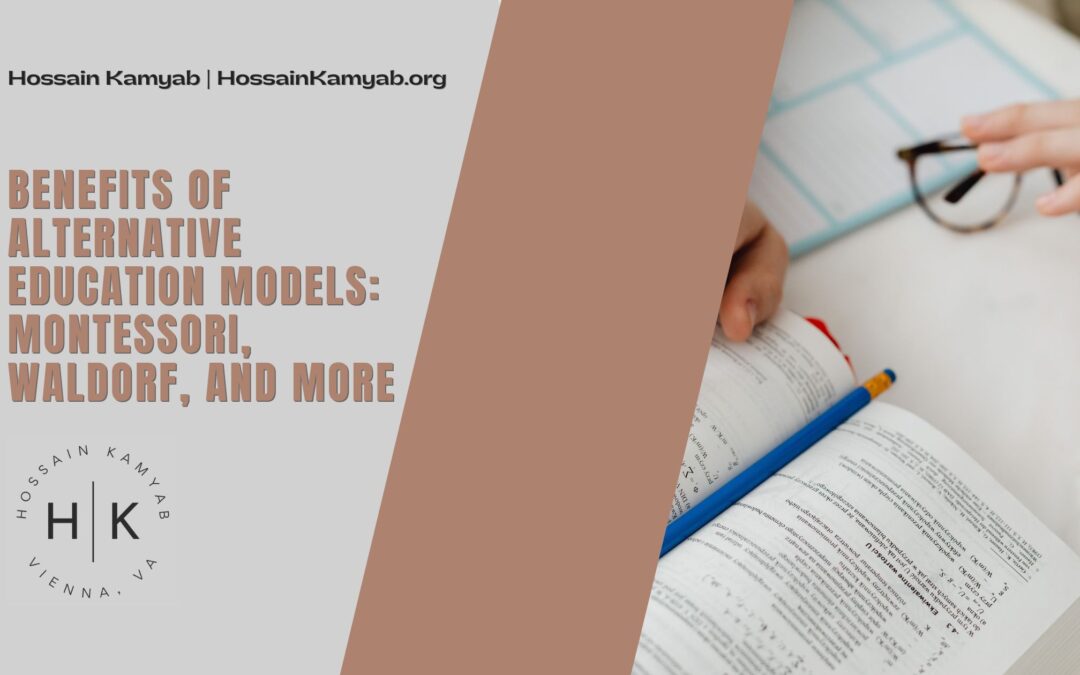In today’s rapidly evolving educational landscape, alternative education models have gained significant attention and recognition for their unique approaches to teaching and learning. Traditional schooling may only sometimes meet every student’s diverse needs and learning styles, leading to the rise of alternative models like Montessori, Waldorf, and others. These innovative educational approaches emphasize experiential learning, individualized instruction, and holistic development. Here we will explore the benefits of alternative education models and the advantages they offer students.
Montessori Education:
Montessori education, developed by Dr. Maria Montessori, is centered around the belief that children are naturally eager to learn and explore their environment. Key benefits of the Montessori method include:
- Individualized Learning: Montessori classrooms foster a child-centric approach, encouraging students to work independently and follow their interests. This promotes personalized learning, allowing each student to reach their full potential.
- Hands-on Learning: Montessori classrooms have specially designed materials encouraging hands-on exploration and sensory experiences. This approach helps students develop their cognitive, motor, and problem-solving skills while promoting a love for learning.
- Mixed-Age Grouping: Montessori classrooms typically include a mixed-age range, allowing younger students to learn from older peers and vice versa. This fosters a collaborative and supportive learning environment, promoting social-emotional development and empathy.
Waldorf Education:
Inspired by Rudolf Steiner’s philosophy, Waldorf education focuses on nurturing the whole child—intellectually, creatively, emotionally, and physically. Some benefits of Waldorf education are as follows:
- Artistic Expression: Waldorf schools place a strong emphasis on artistic expression, integrating arts and crafts, music, and theater into the curriculum. This holistic approach encourages creativity, imagination, and self-expression, fostering well-rounded individuals.
- Play-Based Learning: Play is considered an essential component of a child’s development in Waldorf education. Young children engage in imaginative play and hands-on activities, allowing them to learn through their natural curiosity and exploration.
- Balanced Curriculum: Waldorf education emphasizes a well-rounded curriculum that includes academics, arts, music, movement, and practical skills. This approach recognizes the importance of developing a child’s physical, emotional, and intellectual capacities equally.
Other Alternative Education Models:
While Montessori and Waldorf are well-known alternative education models, there are several others worth mentioning, such as:
- Reggio Emilia: This model encourages children to explore their interests and learn through project-based investigations. It emphasizes collaboration, critical thinking, and the integration of arts into everyday learning.
- Steiner Education: Similar to Waldorf education, Steiner schools focus on the holistic development of students through a balanced curriculum and a strong emphasis on the arts, imagination, and practical skills.
- Democratic Education: This model emphasizes student empowerment, self-governance, and decision-making in the educational process. Students actively participate in shaping their learning experience, promoting autonomy and responsibility.
Alternative education models like Montessori, Waldorf, and Reggio Emilia offer valuable alternatives to traditional schooling. These models emphasize individualized learning, hands-on experiences, holistic development, and integrating arts and creativity into the curriculum. By embracing diverse educational approaches, we can cater to students’ unique needs and learning styles, fostering a love for learning and preparing them for success in the 21st century.

